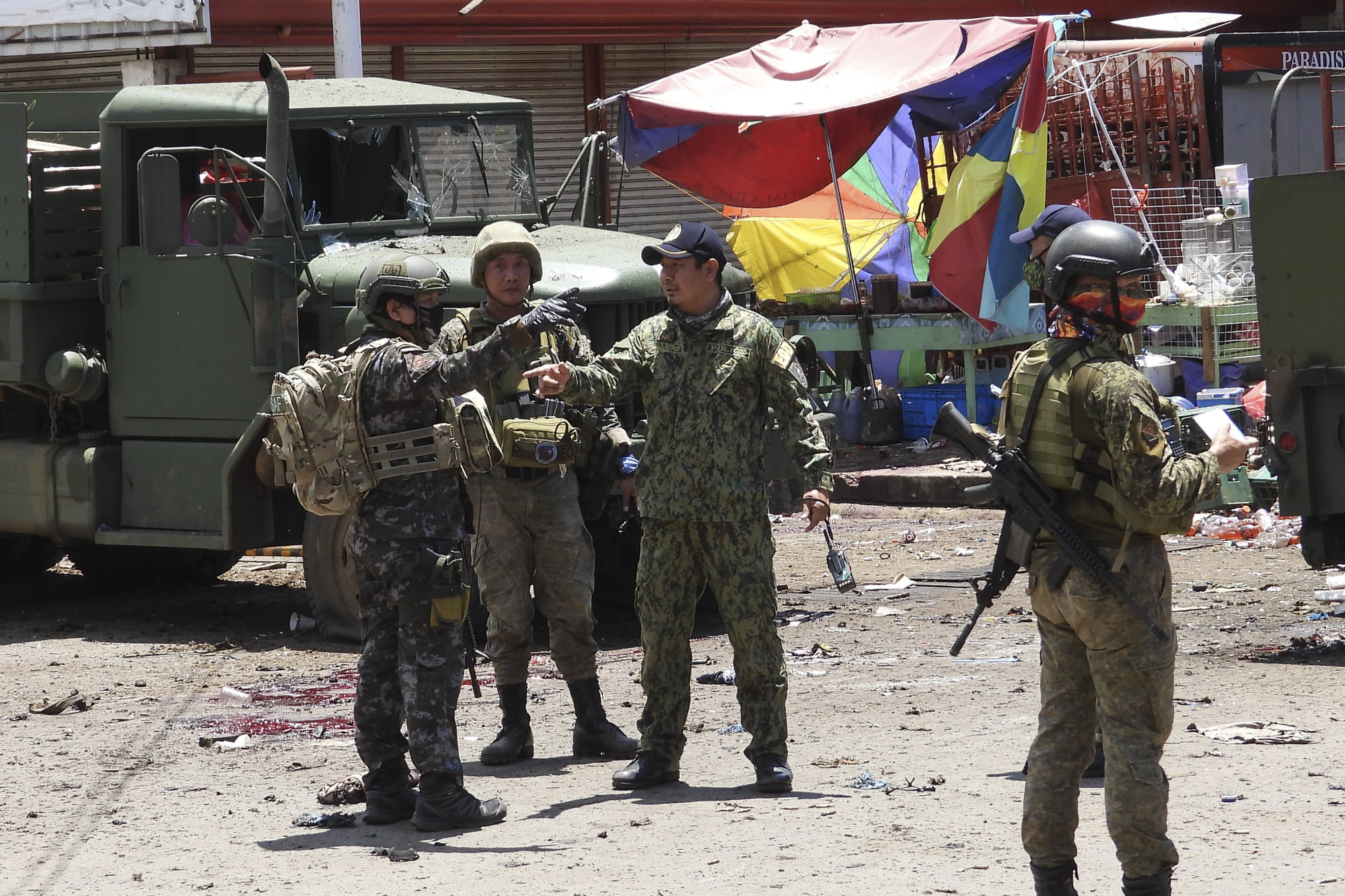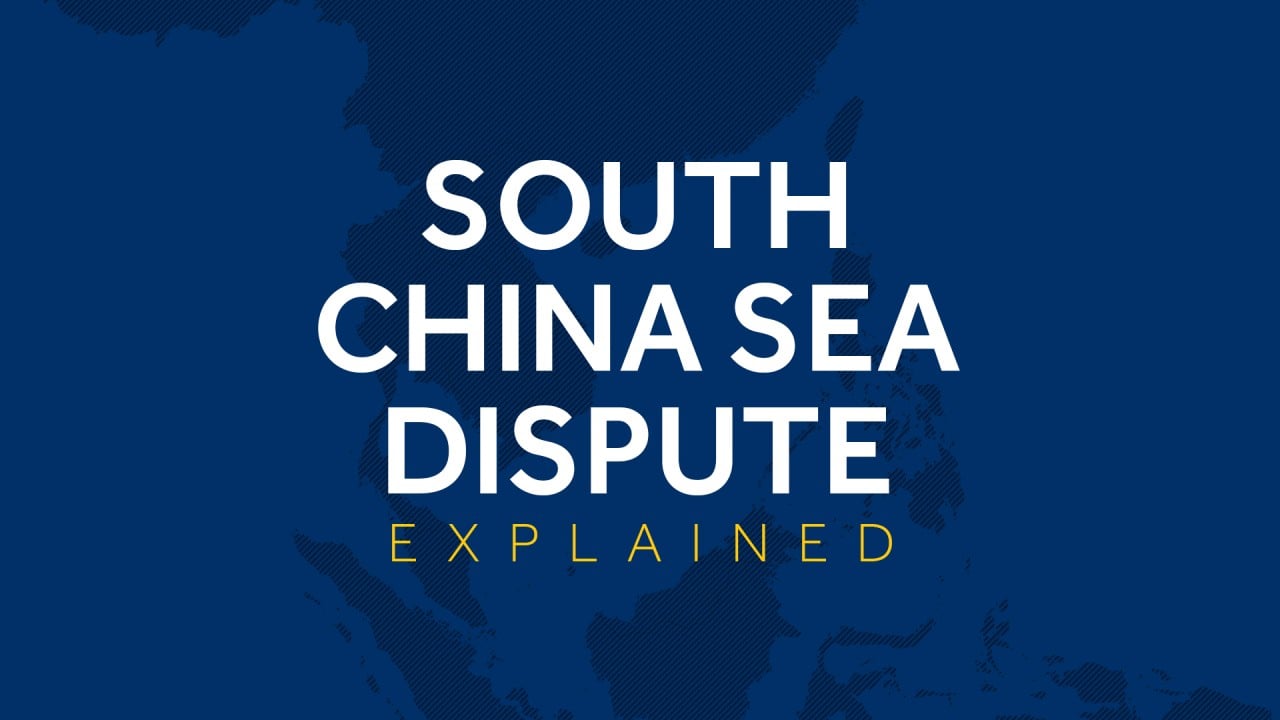
Malaysia must shift from ‘jungle warfare’ to keep eye on Chinese boats in South China Sea, militants, as maritime threats rise
- Chinese coastguard ships have regularly entered Malaysian waters, while militants have come into the country through the east coast
- Ex-minister says Malaysia’s coastguard is poorly funded, while one analyst says it also lacks a fleet to have a ‘persistent presence’ in its own waters
Malaysia’s security threats are now coming from the sea, including incursions into its waters by Chinese coastguard ships and by armed gunmen, but the country remains stuck on “jungle warfare” with security resources concentrated on Peninsular Malaysia, according to analysts and a former deputy defence minister.
In recent years, Chinese coastguard ships have regularly entered Malaysia’s exclusive economic zone (EEZ) in the South China Sea, off the eastern states of Sarawak and Sabah.
In February 2013, Sabah was rocked by the – ultimately unsuccessful – invasion of over 200 armed followers of the Philippines’ self-proclaimed Sultan of Sulu, Jamalul Kiram III. The men travelled by motor boats from Sulu island and landed in the Sabah town of Lahad Datu.
Malaysia expects more Chinese boats as Petronas works in South China Sea
“Alas, due to inertia, Malaysia too often acts as if jungle warfare is still the main form of conflict, concentrating security resources in the Peninsular Malaysia, and coloured by a land- based perspective,” said former Malaysian deputy defence minister Liew Chin Tong.
Liew was a guest speaker at a webinar held last week, titled “A New Security Mindset for Malaysia in the 2020s”, organised by Singapore’s ISEAS-Yusof Ishak Institute.
“Yet the challenges are now coming from the sea, no longer the jungle,” Liew added.
Malaysia’s security threats are twofold: threats to its sovereignty within its maritime EEZ and the continued threat of terrorism, said Zachary Abuza, Professor of Southeast Asia studies at the Washington-based National War College.
Abuza said the greatest threats to Malaysian security were in East Malaysia, where militants and armed groups were entering Sabah via the sea.
“The [Philippine] Abu Sayyaf group has launched kidnapping raids for decades there,” Abuza said. “Foreign fighters, from Jemaah Islamiah, pro-Islamic State groups and the local Darul Islam Sabah have moved personnel in and out of Mindanao and the Sulu Archipelago through Sabah for years.”

Collin Koh, a research fellow at Singapore’s S. Rajaratnam School of International Studies, agreed.
“As a maritime nation with a considerable swathe of maritime zones to cover, many security threats Malaysia confronts come from the sea, be it smuggling, illegal, unreported and unregulated fishing, drug trafficking and transnational terrorism,” Koh said.
“And in the South China Sea, Malaysia’s offshore energy work has come under no let-up in pressure from Beijing which has been exercising coercion using its maritime forces.”
What are the most serious terror threats in Southeast Asia 20 years after 9/11?
In October, Malaysian Foreign Minister Saifuddin Abdullah said he expected more Chinese vessels to enter the country’s waters “for as long as” Petronas developed a gas field in Malaysia’s EEZ in the South China Sea around the waters off Sarawak.
Abuza said China was determined to “harass” Petronas oil exploration off Sabah and had engaged in seismic activity just inside one of the zones of its “Nine-Dash Line”, a demarcation China uses to stake its claim to nearly 80 per cent of the South China Sea based on historical links.
“The size of China’s coastguard, augmented by an enormous maritime militia, gives it a near constant presence in places in Luconia Shoal, off Sarawak, where Petronas’ Kasawari gas field is located,” Abuza said.

Discovered in November 2011, the Kasawari field contains an estimated 3 trillion cubic feet of recoverable gas resources.
“China has signalled a real willingness to escalate the situation and use their military in non-kinetic ways to threaten Malaysia, such as with the incursion of 16 PLA (military transport) planes,” Abuza added.
In June last year, 16 Chinese military transport jets flew close to Malaysia’s air space without prior notification, a move that triggered Kuala Lumpur to scramble its own fighter aircraft.
“China takes advantage of the fact that Malaysia has no appetite for escalating a conflict,” Abuza said.
Malaysia scrambles jets to intercept ‘incursion’ by 16 Chinese military planes
Koh said while China deployed “coercive techniques” – imposing a de facto permanent presence of Chinese coastguard ships backed by China’s People’s Liberation Army Navy in the Malaysian EEZ off Sarawak, it also appeared to take “apparent care” not to escalate those moves that could result in skirmishes.
“But on the whole, the Royal Malaysian Navy and Malaysian Maritime Enforcement Agency (MMEA) remain short on assets compared to their Chinese counterparts,” said Koh, adding that the shortfall has given China an edge.

Malaysian coastguard poorly funded
Former deputy defence minister Liew Chin Tong said the poorly-funded state of the country’s coastguard often left it struggling “to pay for fuel to operate its dilapidated fleet”.
The MMEA receives a 550 million ringgit annual allocation in the budget which is “highly inadequate”, he said.
Many of the coastguard’s ships were donated by the navy or by foreign donors and were dilapidated, Liew said.
Liew noted the encroachment from China came from its coastguards and not its navy.
“It is therefore important that Malaysia has a comparable coastguard to respond with, rather than depend on the navy to respond to encroachment from other states,” Liew said.
“A decently functioned coastguard would relieve the navy of some secondary roles, particularly in patrolling and allow the navy to focus on its primary role which is be prepared for war.”
How to oppose Beijing’s South China Sea claims? Malaysia, Indonesia differ
Collin Koh of Singapore’s RSIS said the Malaysian coastguard also faced a shortfall in the right type of assets required for persistent presence in the open waters of the country’s EEZ, including offshore patrol vessels.
“MMEA has scores of largely inshore and coastal assets, but they’re too small and not optimised for the type of persistent presence operations only offshore patrol vessels are designed to perform,” said Koh, noting that “the navy’s larger, offshore-capable assets” was filling this void.
Liew said the Malaysian armed forces was heavily weighted on the army, which had 80,000 personnel, compared with 18,000 for the navy and 15,000 for the air force.
Nevertheless, Abuza of the National War College described the MMEA as a “very capable and professional coastguard”.
“They are held in very high regard, and since they stepped up operations in the Lahud Datu invasion in 2013 and the spate of Abu Sayyaf kidnappings in 2016-17, the MMEA has done so much to deter further incursions,” Abuza said.
He added the MMEA “deserves credit” for the improved security situation in Sabah.

There were no new reports of kidnappings in Sabah in 2021, according to Defence Minister Hishammuddin Hussein.
On January 14, Hishammuddin announced that a new 646.15 million ringgit army base would be built in Lahad Datu, Sabah, the same town where armed militiamen from Sulu landed in 2013.
Construction on the camp would begin this year in “our efforts to enhance the army’s capability and readiness when dealing with threats”, Hishammuddin said.
The allocation of resources for the construction of a new army base in Sabah is “an army solution to a maritime threat”, said Abuza of the National War College.
“A much better allocation of resources would be to increase funding for the Malaysian Maritime Enforcement Agency and the Navy,” he added.
China harassing Malaysian oil and gas vessels on ‘daily’ basis: US think tank
Abuza said the best way to stop terrorist attacks or attacks by irredentist militants was to “deter or defeat them on the high seas before they can get to land and cause damage to persons or property”.
“The Malaysian Armed Forces, like almost every other military in Southeast Asia, over-resources its land forces, at the expense of their maritime services, whether navy or coastguard,” he said.
Koh of the RSIS said the Malaysian army had been playing “a sizeable role in Sabah” in countering a host of threats – smuggling, human trafficking, and generally to maintain a robust presence post-Lahad Datu incident in 2013.
Indonesia’s plan to relocate its national capital from Jakarta to Kalimantan also raised hopes in Sarawak and Sabah of potential spillover of “economic benefits” as well as “security problems”, Koh said.
Koh said the army did play a maritime security role as it operated small boats and craft for inshore and coastal surveillance and interdiction duties which were instrumental in curbing seaborne transnational crimes.
“So the maritime security actors aren’t only confined to the navy and MMEA, even if the army is more often seen to play a secondary, low-profile role in this regard,” he said.


